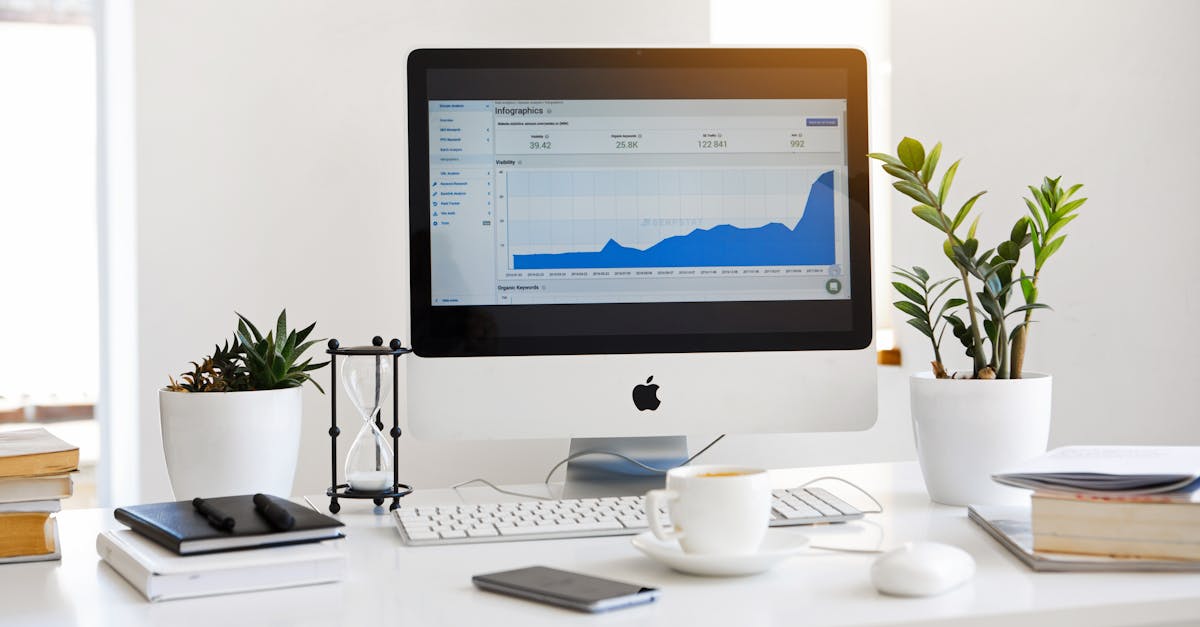Unlocking the Future of Gold Market Forecasting: The Power of Data Analytics

The gold market is a complex and ever-changing landscape, making it difficult to predict future price movements. However, with the advent of data analytics, gold market forecasting has become more accurate and reliable than ever before. By leveraging Big Data, machine learning, and artificial intelligence, traders can now uncover hidden patterns and trends that are not easily discernible to the human eye, enabling them to make more informed trading decisions.
With enhanced data analytics, traders can now gain a deeper understanding of the factors that influence gold prices. This includes macroeconomic indicators such as GDP, inflation, and interest rates, as well as market data such as gold prices, trading volume, and social media sentiment. By analyzing these diverse data sources, traders can identify potential trading opportunities and develop more effective trading strategies.
The benefits of enhanced data analytics for gold market forecasting are undeniable. Improved accuracy, reduced risk, and the identification of new trading opportunities are just a few of the advantages that traders can enjoy. As the gold market continues to evolve, data analytics will play an increasingly important role in helping traders navigate its complexities and achieve success.
Key Insights
- Enhanced data analytics offers significant advantages for gold market forecasting, including improved accuracy, reduced risk, and the identification of new trading opportunities.
- Data analytics enables traders to analyze vast amounts of data from diverse sources, including economic indicators, market data, and social media sentiment, providing deeper insights into market dynamics.
- Machine learning algorithms and big data platforms play a crucial role in gold market forecasting, allowing traders to identify subtle patterns and correlations that would otherwise remain hidden.
- Successful case studies demonstrate the effectiveness of data analytics in gold market forecasting, with examples of hedge funds and proprietary trading firms achieving significant profits through data-driven insights.
- Challenges in gold market forecasting using data analytics include data quality, model accuracy, and the interpretation of results, requiring careful attention and continuous monitoring to ensure optimal forecasting outcomes.
1. The Role of Data Analytics in Gold Market Forecasting
Traditional methods of gold market forecasting, such as technical analysis and fundamental analysis, often rely on limited data and subjective interpretations. Data analytics, on the other hand, provides a more comprehensive and objective approach by analyzing vast amounts of data from diverse sources, including economic indicators, market data, and social media sentiment. This allows traders to identify subtle patterns and correlations that would otherwise remain hidden, leading to more accurate and reliable forecasts.
Moreover, data analytics enables traders to automate the forecasting process, reducing the risk of human error and biases. By leveraging sophisticated algorithms and machine learning techniques, traders can develop predictive models that continuously learn and adapt to changing market conditions. This automation not only saves time and effort but also ensures consistency and objectivity in the forecasting process.
2. Types of Data Utilized for Forecasting

To effectively forecast gold market movements, traders must leverage a diverse range of data sources. Economic indicators, market data, and social media data all play a crucial role in providing valuable insights and shaping trading strategies.
Economic indicators, such as GDP, inflation, and interest rates, offer a macroeconomic perspective on the factors influencing gold prices. GDP growth, for example, can indicate the overall health of the economy and impact demand for gold as a safe-haven asset. Inflation, on the other hand, can affect the purchasing power of currencies and drive investors towards gold as a hedge against inflation. Interest rates, set by central banks, can influence the opportunity cost of holding gold and make it more or less attractive to investors.
Market data, including gold prices, trading volume, and open interest, provides direct insights into the supply and demand dynamics of the gold market. Gold prices, the most obvious indicator, reflect the market’s collective valuation of gold. Trading volume indicates the level of activity in the market, while open interest provides information about the number of outstanding contracts, offering insights into market sentiment and potential price trends.
3. Machine Learning and Artificial Intelligence for Gold Market Analysis
Neural networks, inspired by the human brain, excel at recognizing intricate relationships and patterns in data. They have proven particularly effective in gold market forecasting, as they can learn from large datasets and adapt to changing market conditions. Decision trees, on the other hand, create branching structures to represent decision-making processes, allowing traders to visualize and understand the factors that influence gold prices. Support vector machines, known for their ability to handle high-dimensional data, are effective in classifying gold market trends and identifying potential trading opportunities.
The integration of ML and AI in gold market analysis has significantly improved the accuracy and efficiency of forecasting. By automating the data analysis process and leveraging advanced algorithms, traders can make more objective and timely decisions, reducing the risk of human error and biases.
4. Big Data Analytics Platforms for Gold Market Forecasting

The advent of Big Data has brought forth a new era of gold market forecasting, enabling traders to analyze vast amounts of data to uncover hidden insights and make more informed decisions. Big data analytics platforms, such as Hadoop, Spark, and Flink, have emerged as powerful tools for processing and analyzing these large datasets, providing traders with a competitive edge in the gold market.
Hadoop, an open-source framework, is renowned for its ability to handle massive datasets across distributed clusters. Its Hadoop Distributed File System (HDFS) and MapReduce programming model allow traders to store and process large amounts of data efficiently. Spark, another open-source platform, offers lightning-fast processing speeds and in-memory computing capabilities, making it ideal for real-time gold market analysis. Flink, a stream processing framework, excels at handling high-velocity data streams, enabling traders to respond to market events in near real-time.
The adoption of big data analytics platforms has transformed the way traders analyze the gold market. With the ability to process and analyze vast amounts of data, traders can now identify trends and patterns that were previously hidden, leading to more accurate forecasts and profitable trading decisions.
5. Challenges in Gold Market Forecasting with Data Analytics
Data quality is of paramount importance in gold market forecasting. The accuracy and reliability of the data used directly impact the quality of the forecasts. Missing or erroneous data can lead to biased and inaccurate results, potentially misleading traders. Ensuring the integrity and completeness of the data is crucial, and traders should employ rigorous data cleaning and validation techniques to mitigate these risks.
Model accuracy is another significant challenge in gold market forecasting. The effectiveness of data analytics models depends on their ability to accurately capture the complex relationships and dynamics of the gold market. Overfitting and underfitting are common pitfalls that can compromise model accuracy. Overfitting occurs when a model learns the idiosyncrasies of the training data too closely, leading to poor performance on new data. Underfitting, on the other hand, occurs when a model is too simple to capture the complexity of the data, resulting in poor predictive power. Striking a balance between model complexity and generalization ability is crucial for achieving optimal accuracy.
6. Benefits of Enhanced Data Analytics for Gold Market Forecasting
Enhanced data analytics offers a multitude of benefits for gold market forecasting, empowering traders with improved accuracy, reduced risk, and the identification of new trading opportunities. By leveraging advanced data analytics techniques and big data platforms, traders can gain deeper insights into the complex dynamics of the gold market, enabling them to make more informed and profitable decisions.
Improved accuracy is a key advantage of enhanced data analytics in gold market forecasting. Traditional forecasting methods often rely on limited data and subjective interpretations, leading to less precise predictions. Enhanced data analytics, on the other hand, utilizes vast amounts of data from diverse sources, including economic indicators, market data, and social media sentiment. This comprehensive data analysis allows traders to identify subtle patterns and correlations that would otherwise remain hidden, resulting in more accurate and reliable forecasts.
Enhanced data analytics also plays a crucial role in reducing risk for gold market traders. By analyzing historical data and identifying potential risk factors, traders can make more informed decisions and develop effective risk management strategies. Data analytics can help traders identify periods of high volatility, potential market reversals, and other potential risks, enabling them to adjust their positions accordingly and mitigate potential losses.
7. Case Studies of Successful Gold Market Forecasting with Data Analytics
The practical applications of data analytics in gold market forecasting have yielded numerous successful case studies, showcasing the transformative power of these techniques in identifying trading opportunities and generating profitable returns.
One notable case study involves a hedge fund that utilized machine learning algorithms to analyze a vast dataset of economic indicators, market data, and social media sentiment. By combining these diverse data sources, the fund’s algorithm was able to identify subtle patterns and correlations that traditional forecasting methods had missed. This enabled the fund to make highly accurate predictions about gold price movements, consistently outperforming the market and generating significant profits for its investors.
Another successful case study highlights the effectiveness of big data analytics in gold market forecasting. A proprietary trading firm leveraged a big data platform to process and analyze real-time data from multiple exchanges, social media platforms, and news sources. By harnessing the power of big data, the firm gained unprecedented insights into market sentiment and trading activity, enabling it to make informed decisions and execute profitable trades in near real-time.
What are the key advantages of using data analytics for gold market forecasting?
Enhanced data analytics offers several key advantages for gold market forecasting, including improved accuracy, reduced risk, and the identification of new trading opportunities. By leveraging advanced data analytics techniques and big data platforms, traders can gain deeper insights into the complex dynamics of the gold market, enabling them to make more informed and profitable decisions.
How can data analytics help reduce risk in gold market trading?
Data analytics plays a crucial role in reducing risk for gold market traders. By analyzing historical data and identifying potential risk factors, traders can make more informed decisions and develop effective risk management strategies. Data analytics can help traders identify periods of high volatility, potential market reversals, and other potential risks, enabling them to adjust their positions accordingly and mitigate potential losses.
Are there any examples of successful gold market forecasts made using data analytics?
Yes, there are numerous successful case studies that demonstrate the effectiveness of data analytics in gold market forecasting. One notable example is a hedge fund that utilized machine learning algorithms to analyze a vast dataset of economic indicators, market data, and social media sentiment to make highly accurate predictions about gold price movements, consistently outperforming the market.
What are some challenges associated with gold market forecasting using data analytics?
Gold market forecasting using data analytics, while powerful, is not without its challenges. Data quality, model accuracy, and the interpretation of results are key areas that require careful consideration and attention. Ensuring the integrity and completeness of the data, addressing potential biases, and striking a balance between model complexity and generalization ability are crucial for achieving optimal forecasting results.
How can traders improve the accuracy of their gold market forecasts using data analytics?
To improve the accuracy of gold market forecasts using data analytics, traders should focus on several key aspects. Firstly, ensuring the quality and reliability of the data is paramount. Data cleaning and validation techniques can help mitigate the impact of missing or erroneous data. Secondly, selecting appropriate data analytics techniques and models is crucial. Different techniques have varying strengths and weaknesses, and choosing the right ones for the specific forecasting task is essential. Finally, traders should continuously monitor and evaluate the performance of their models and make adjustments as needed. The gold market is constantly evolving, and models should be adapted to reflect changing market dynamics.
Key Insights
| Key Insight | Description | |:—|:—| | Enhanced Data Analytics for Gold Market Forecasting | Data analytics offers significant advantages for gold market forecasting, including improved accuracy, reduced risk, and the identification of new trading opportunities. | | Diverse Data Sources and Analysis | Data analytics enables traders to analyze vast amounts of data from diverse sources, including economic indicators, market data, and social media sentiment, providing deeper insights into market dynamics. | | Machine Learning and Big Data Platforms | Machine learning algorithms and big data platforms play a crucial role in gold market forecasting, allowing traders to identify subtle patterns and correlations that would otherwise remain hidden. | | Successful Case Studies | Successful case studies demonstrate the effectiveness of data analytics in gold market forecasting, with examples of hedge funds and proprietary trading firms achieving significant profits through data-driven insights. | | Challenges and Considerations | Gold market forecasting using data analytics involves challenges such as data quality, model accuracy, and the interpretation of results, requiring careful attention and continuous monitoring to ensure optimal forecasting outcomes.

0 responses to “Enhanced Data Analytics for Gold Market Forecasting”